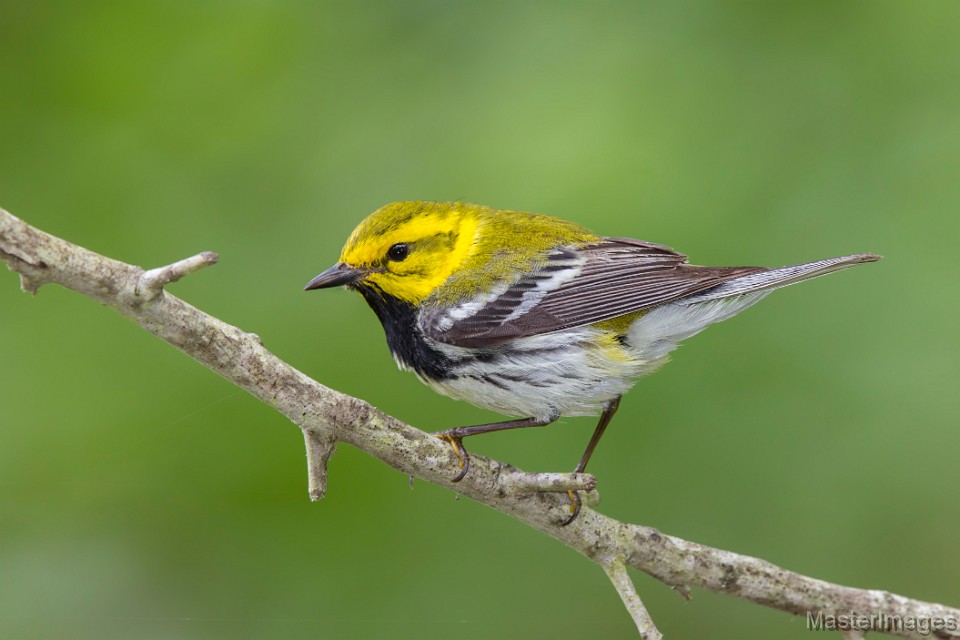
An Exciting Time Of Year!
An Interesting Season
Birding is particularly exciting in early spring. Many of our winter visitors from the north can still be found and some linger into April and even May before departing. Migrants begin arriving in March.
This year, with the unusual warm-up in late February, some species returned a month early. Red-winged Blackbirds were observed in downtown Tupper Lake on February 22, in the heart of winter! It was lovely to hear their song in February.
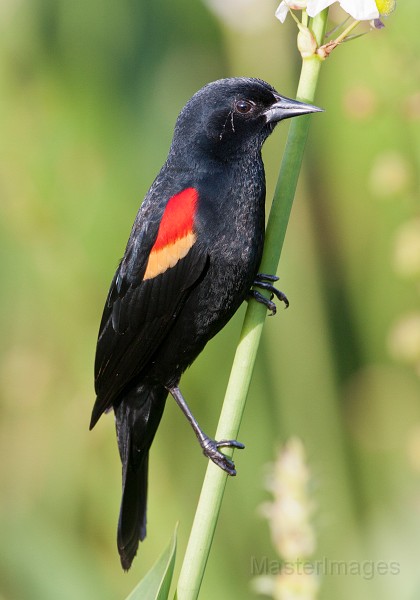
American Robins, a partial migrant species, could be found throughout the winter. A few wintered in Tupper Lake foraging in fruit trees.
A Few Lingering Winter Visitors
Bohemian Waxwing, a species from northwestern North America, and my most requested winter species for visiting birders to see, stays into April before a long distance journey to their breeding grounds. A vocal flock of over 80 Bohemian Waxwings was recently observed drinking water in a driveway near the Skyline Ice Cream stand in Tupper Lake! Watch for this beautiful bird in fruit trees.
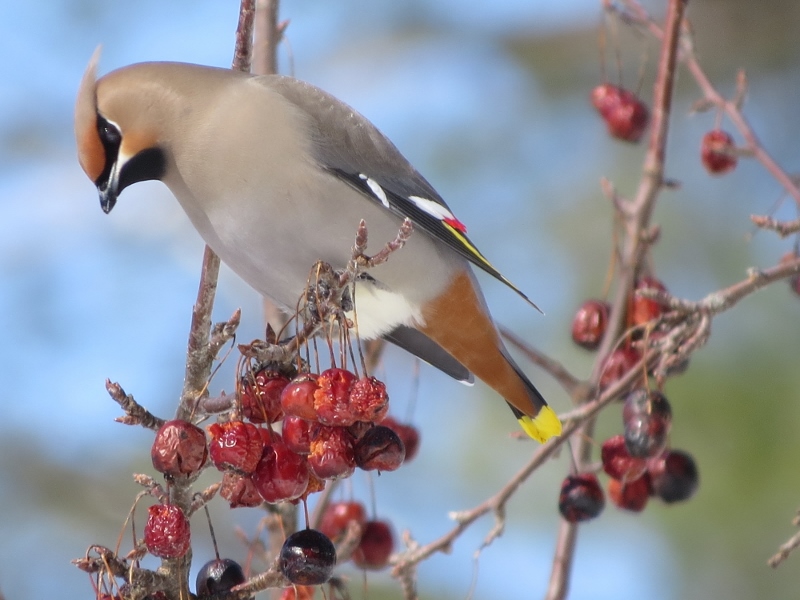
Tupper Lake residents have been commenting on the “beautiful white birds” they have been seeing along the roadways. Snow Buntings are a fascinating arctic species that winter in open fields, beaches, and grassy roadside edges in New York. In early spring, they move through our area in lovely, glowing white flocks as they head north to the arctic, where males arrive up to 6 weeks ahead of females. There are limited rock crevasse nesting areas in the high arctic, so males return as early as possible to defend a breeding territory from other males. On a recent drive through Tupper Lake, I found two flocks of Snow Buntings along Route 30 and another flock in Piercefield along Route 3.
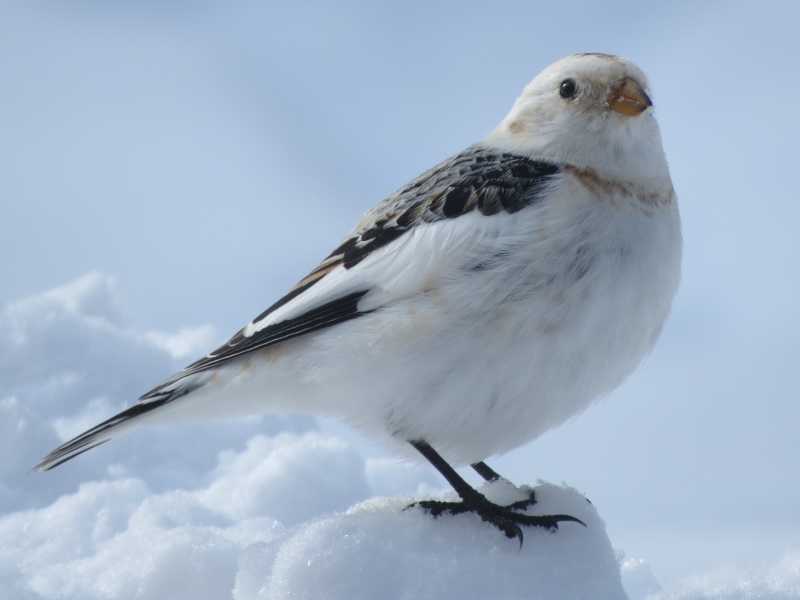
Northern Shrike are visitors from our north that stays into April before departing. A Northern Shrike wintered in the bushy field across from the Tupper Lake Town Court Building (& the OWD smokestack). Northern Shrikes are predatory songbirds that kill small mammals by impaling their sharp hooked bill into the back of the neck of their prey. To store their prey, they will impale it on a Hawthorn tree thorn or barbed wire fence! They spend most of their time in bushy, wet habitat, but hunt from the tops of trees where they are easy to spot. I recently observed a Northern Shrike hunting in wet, bushy, open habitat along Route 30 in Tupper Lake less than 3 miles south of the Boat Launch. It likely wintered in this location. Listen for its unusual song full of warbles and harsh tones in April! Northern Shrikes tend to sing in October when they first arrive, and again in April before they head north.
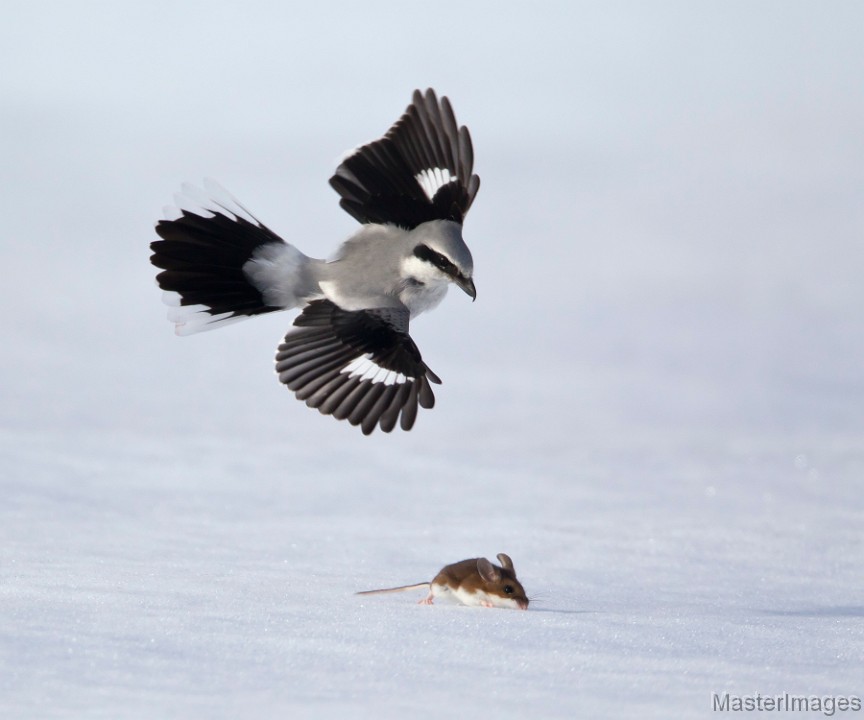
Just Passing Through!
Many species can be observed as they move north through our area to northern breeding territories – waterfowl, shorebirds, raptors, and songbirds. I recently saw a Golden Eagle that was hunting along Sabattis Circle Road. The non-stop, loud vocalizations from American Crows alerted me to the presence of the Golden Eagle. It took flight and the crows harassed it until it soared to the north.
Solitary Sandpipers can be observed moving through in spring and fall. I often observe them at Pitchfork Pond along Kildare Road in Tupper Lake.
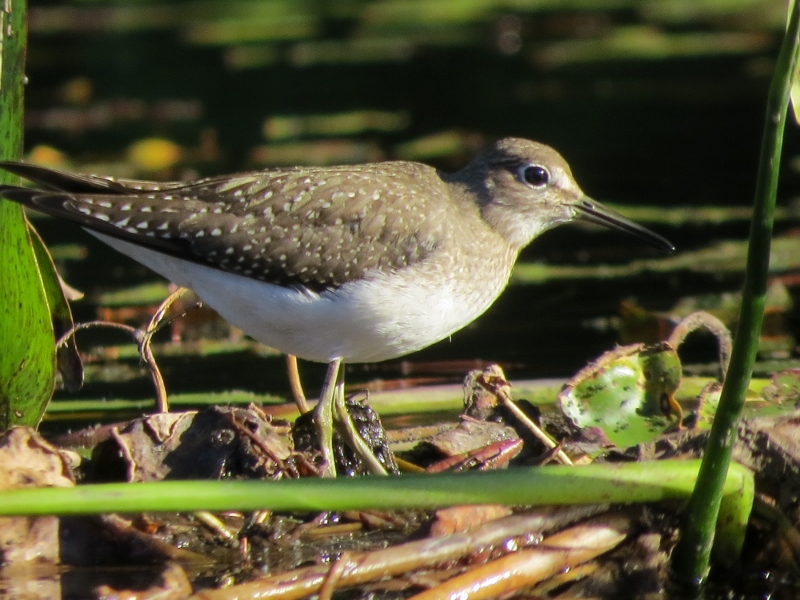
Bufflehead is a small, lovely duck that moves north on our lakes in early spring. Watch for them along the Tupper Lake causeway.
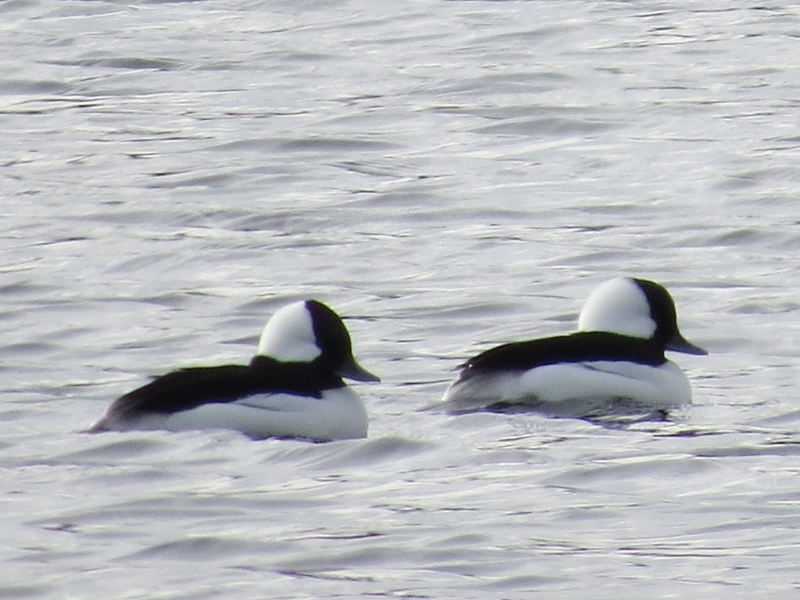
Early Spring Arrivals
Migratory species move back into our area in large numbers during March, April, and May.
Warbler species, the colorful “butterflies of the bird world” begin to arrive in mid-April and fill in through May. Palm and Pine Warblers, in their lovely yellow colors, are the first species to arrive. Northern New York is the best place in North America to find nesting warblers with 28 species that breed in our area. They fill the forest with the sounds of their gorgeous songs.
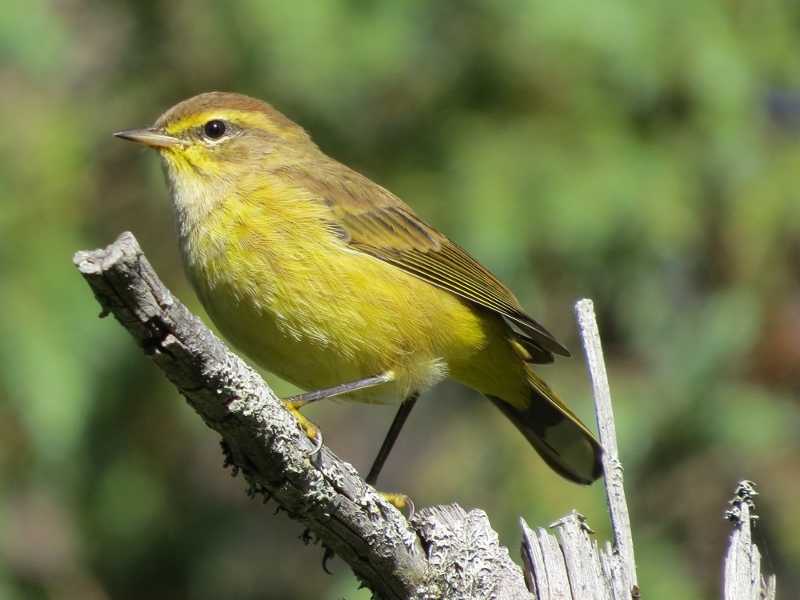
March arrivals include American Woodcock, Red-shouldered Hawk, Northern Saw-whet Owl, Belted Kingfisher, Northern Flicker, Chipping Sparrow, and waterfowl such as Wood and Ring-necked Ducks, Common Goldeneye, Hooded Merganser, and Pied-billed Grebe.
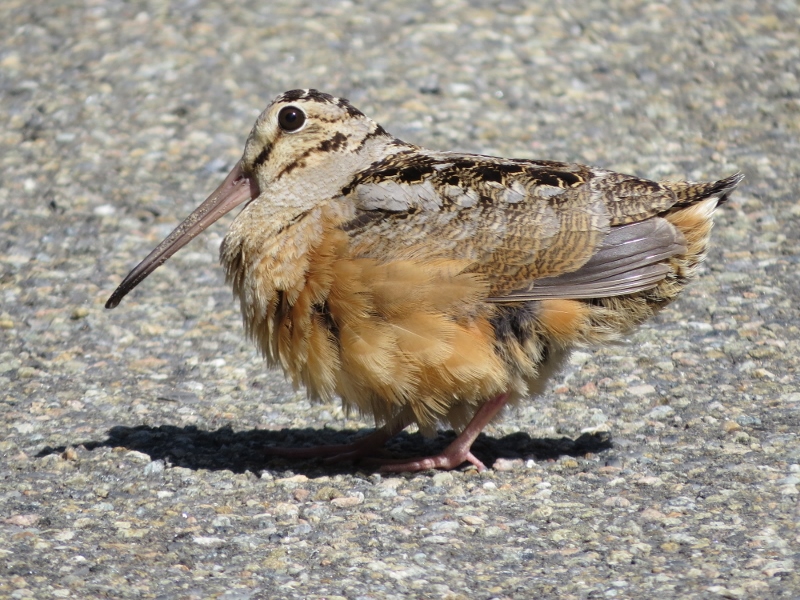
April brings in a bigger wave of migrants that includes Sandhill Crane, Wilson’s Snipe, Common Loon, American Bittern, Great Blue Heron, Osprey, Broad-winged Hawk, Yellow-bellied Sapsucker, Eastern Phoebe, Blue-headed Vireo, Tree and Barn Swallows, Winter Wren, Hermit and Wood Thrushes, Brown Thrasher, Purple Finch, Yellow-rumped Warbler, Swamp Sparrow, White-throated Sparrow (the mascot of the north!), Rusty Blackbird, and many more species.
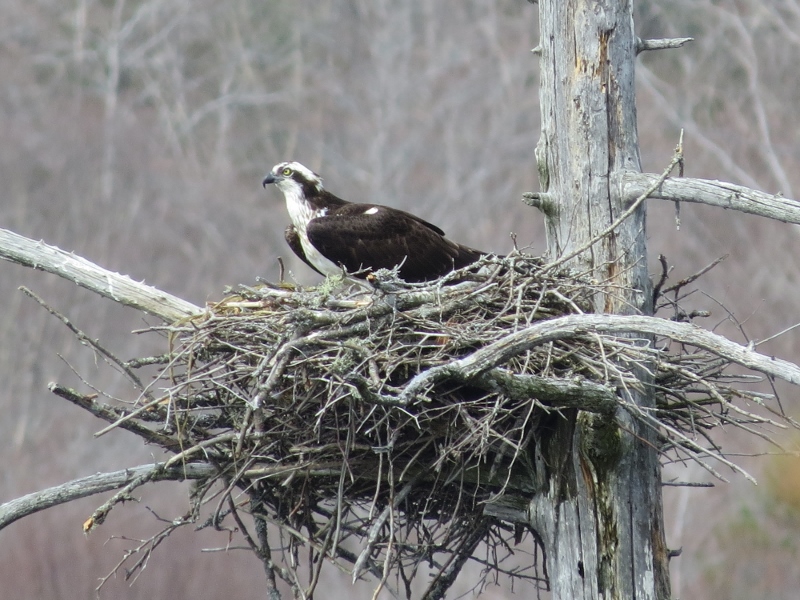
(Later spring arrivals fill-in during May and include Chimney Swift, Ruby-throated Hummingbird, Olive-sided, Yellow-bellied, Alder, and Least Flycatchers, Philadelphia and Red-eyed Vireos, Bicknell’s and Swainson’s Thrushes, Canada Warbler, Mourning Warbler, Scarlet Tanager, Lincoln’s Sparrow, and more.)
Most species migrate at night, so there is great excitement at dawn each day as birders listen for new songs across the landscape!
Considered to have the most beautiful song of any species in North America, the Hermit Thrush returns to our area in April. Its ethereal song is captivating and always a highlight for me to hear in spring!
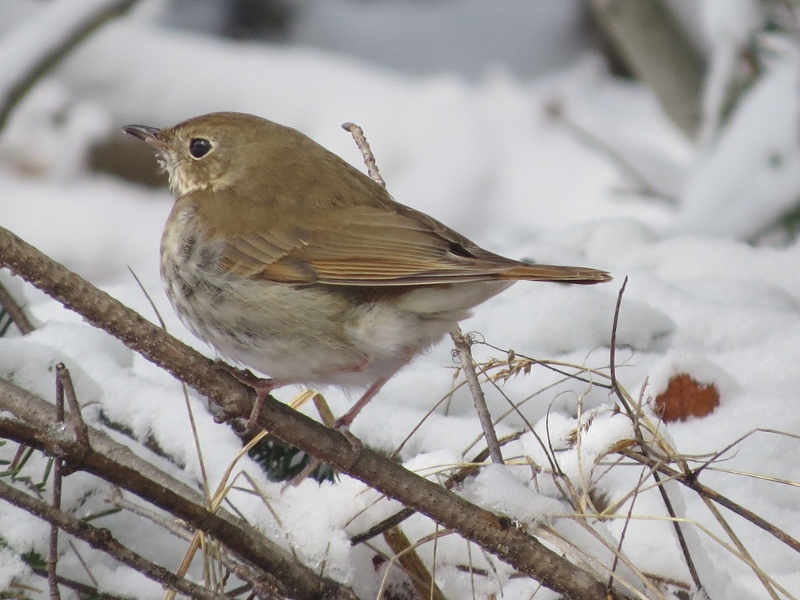
Year-Round Species in Early Spring
Our year-round species change their behavior as we head into early spring. Black-capped Chickadees, Brown Creepers, and Golden-crowned Kinglets begin to sing, heralding the seasonal changes to come. Woodpecker species spend more time drumming and vocalizing. Male Ruffed Grouse display in the roadways with their Elizabethan-looking black collars, and American Crows return and fight for territory with resident Common Ravens. Bald Eagles are observed carrying large sticks for their nests. Ice begins to melt off the lakes.
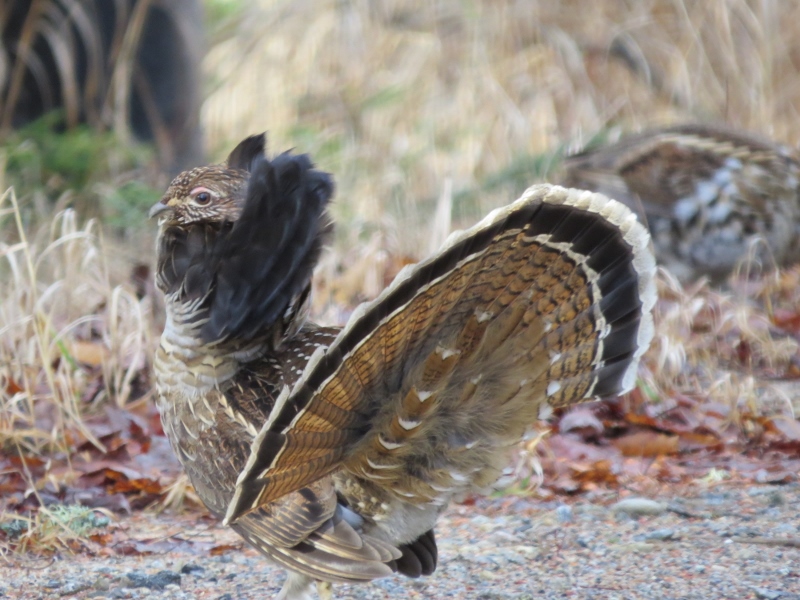
By late winter into early spring, some species are already nesting. Gray Jays court in February, build their nests in March, and fledge young by late April.
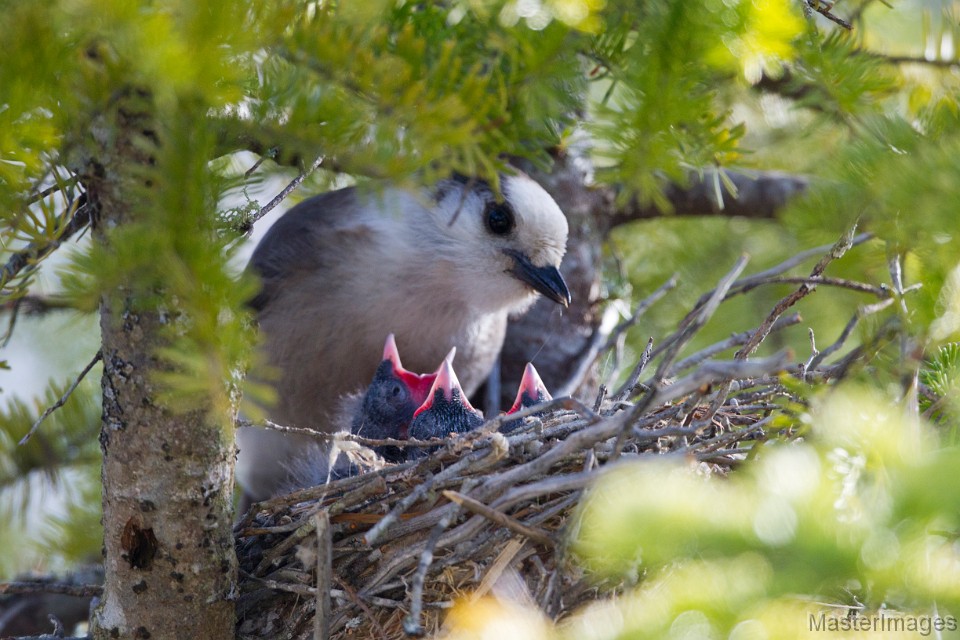
Great Horned Owls nest in winter and have young by early spring. Common Ravens build their nests in late winter. The world around us comes alive with activity.
Just a Few of the Great Birding Locations in and near Tupper Lake
Massawepie Mire
Massawepie Mire is the largest bog in New York State and a designated Important Bird Area (IBA). Most of the dirt road leading to the trailhead is not plowed in winter, so it is usually late April before it is passable. Hiking and birding at Massawepie Mire is the activity that I most look forward to in spring! The mire is filled with boreal species including Black-backed Woodpeckers, Yellow-bellied Flycatchers, Gray Jays, Boreal Chickadees, Palm Warblers (18 warbler species can be found!), Lincoln’s Sparrow, and more.
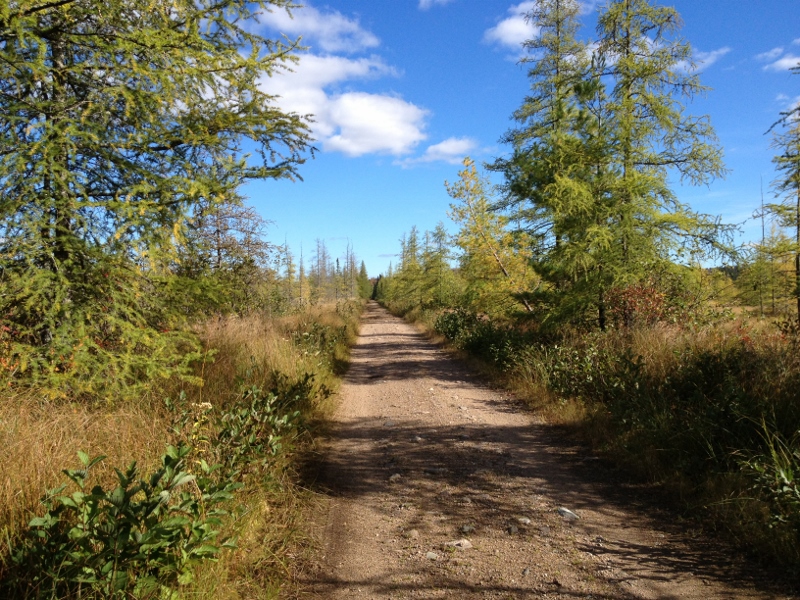
Spring Pond Bog Preserve
Spring Pond Bog Preserve, a Nature Conservancy property, is the second largest bog in New York State and also a designated IBA. Like Massawepie, there is abundant boreal habitat and many places to explore in the complex. Spruce Grouse, a rare bird in the Adirondacks, can still be found nesting in the Spring Pond Bog complex. The complex is made up of dirt roads that are not plowed, so late April is the earliest time it can be accessed by car.
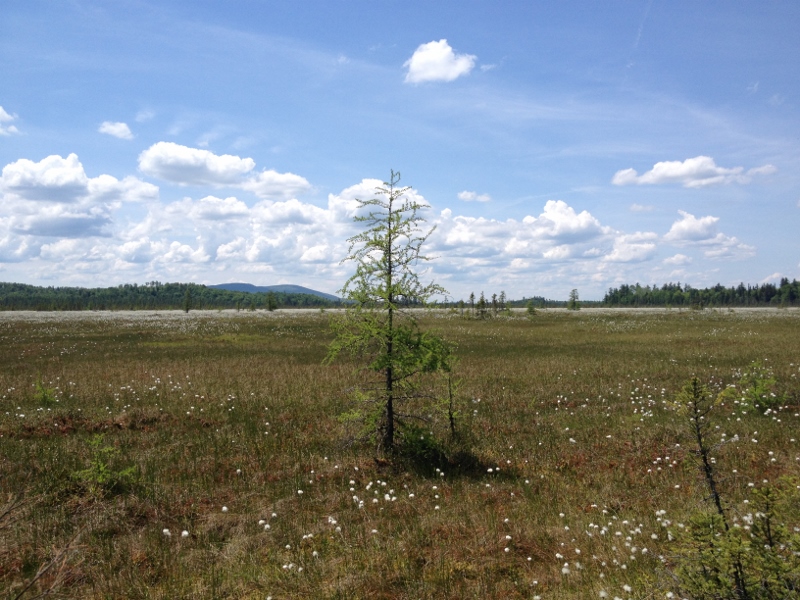
Tupper Lake Causeway, Viewing Deck Overlook, and Raquette River Drive
The pull-offs along the Tupper Lake Causeway are great locations to look for birds. Views of Simon Pond, the Raquette River, and Tupper Lake are visible at this location. Yellow Warblers nest in the shrubby habitat and Belted Kingfishers can be observed fishing. Barn and Tree Swallows swoop over the water and the local nesting pair of Bald Eagles can be observed. Wood and Ring-necked Ducks can be observed on the water along with Great Blue Herons. Common Loons nest in this area also.
The viewing deck along the causeway (next to the Lakeview Lanes bowling alley) is another interesting birding stop that overlooks vast Tupper Lake Marsh. American Bitterns, Wilson’s Snipes, and Northern Harriers (known as the “marsh hawk”) can all be found. I have even found nesting Sedge Wrens and Bobolinks far out in the marsh where it is a bit drier.
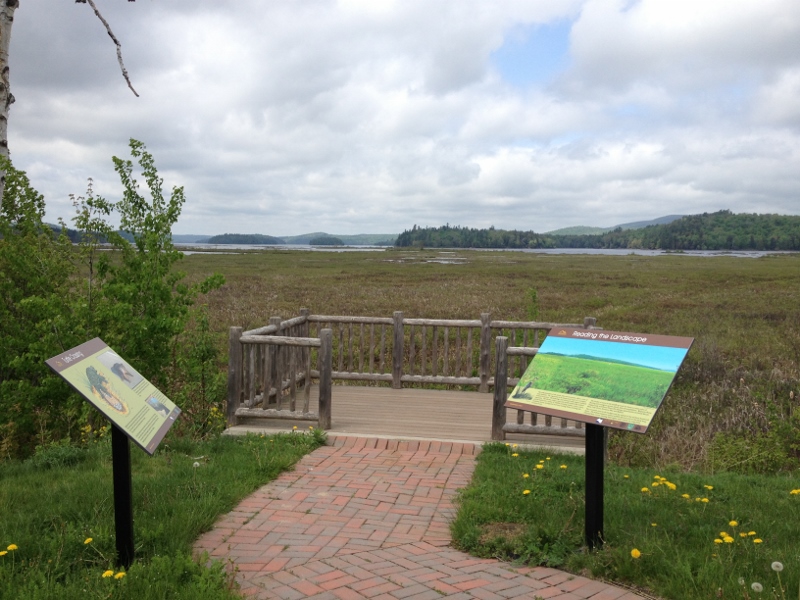
Raquette River Drive is a great road to view the newly nesting Sandhill Cranes. The cranes spent the spring and summer of 2015 and 2016 in Tupper Lake, and raised two young in 2016 – a first breeding record for this species in the Adirondacks. They nested in the huge marsh between the Raquette River and Simon Pond. When the young are old enough to fly, the Sandhill Cranes can often be observed foraging in fields along Stetson and Dugal Roads. Wilson’s Snipes can be heard vocalizing all day along this road and Eastern Kingbirds nest by the Raquette River.
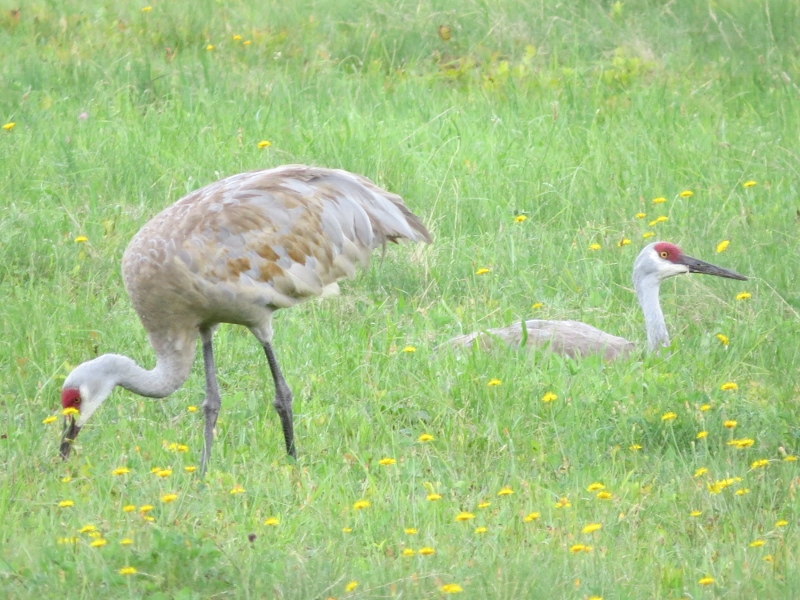
Low’s Ridge – Upper Dam Trail
The Low’s Ridge – Upper Dam Trail is a lovely, level, 2.5-mile trail that passes through a variety of habitats including a mile-long bog, marsh, ponds, mixed and deciduous forests. Boreal birds such as Yellow-bellied Flycatcher, Gray Jay, Palm and Canada Warblers, Northern Waterthrush, and Lincoln’s Sparrow can be found in the first mile. Hitchins Pond, along the Bog River, is found at the end of the trail where you can view Common Loons and Bald Eagles. There is a mile-long trail up Low’s Ridge where many of the Adirondack High Peaks can be observed in addition to the beautiful Bog River Valley. The Low’s Ridge – Upper Dam Trail is reached on dirt roads that are not plowed in winter, so vehicle access begins in late April.
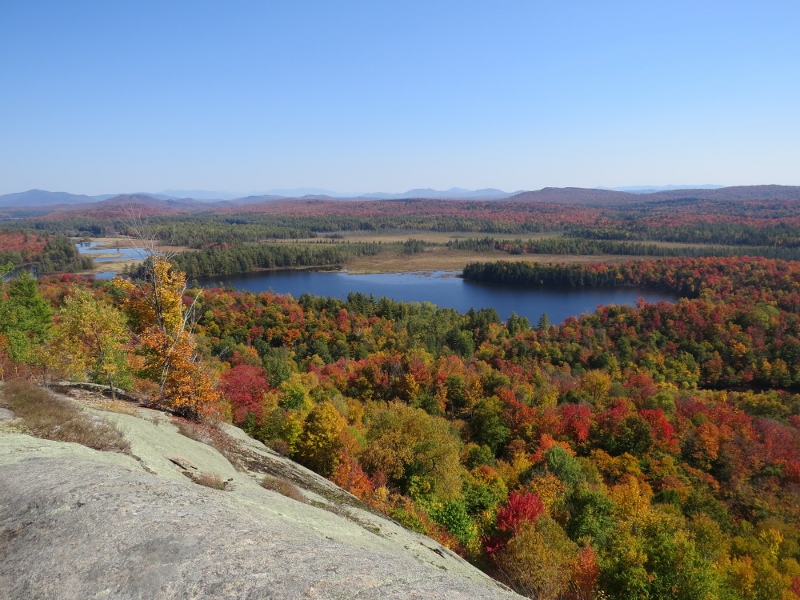
Tupper Lake sits in the heart of the Adirondacks “boreal zone,” connecting you with fantastic birding opportunities in every direction. Larkin’s Junction Deli and Bakery is a great place to stop for food and delicious home-baked goods - for those birders who are out at dawn, Larkin’s opens at 4 a.m.!
Discover our many options for lodging and food and plan to visit our boreal zone while the trees are singing!
